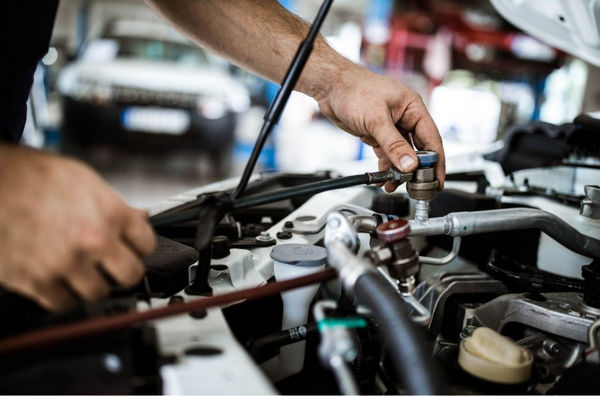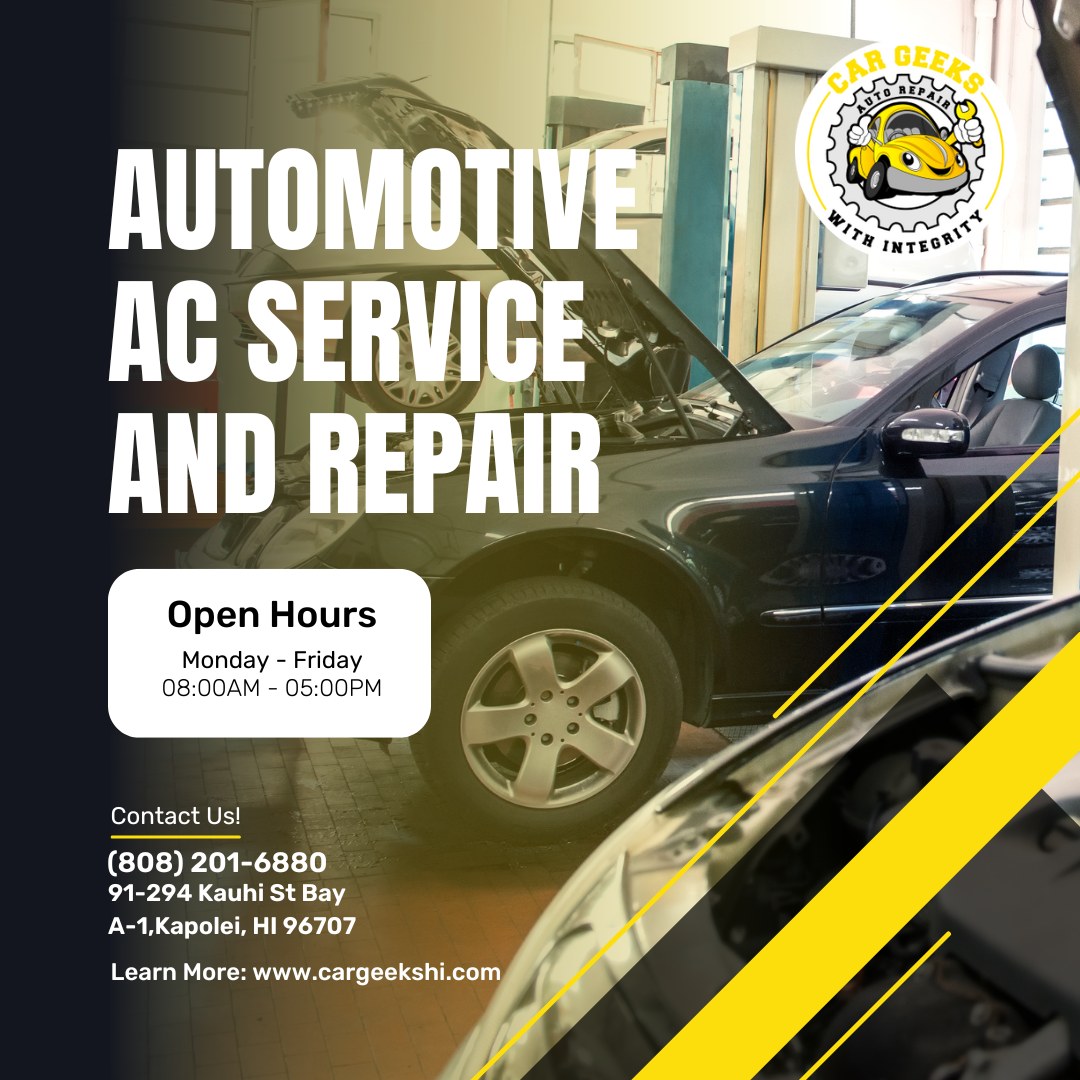What is Freon?
The term 'Freon' has been used nowadays to mean 'refrigerant.' Also known as R12, though already banned in the 90s, the name caught on and became the household term for the refrigerant used in car air conditioning.
What is an A/C compressor?
The compressor is a part of the A/C system that pressurizes the refrigerant that cools your air. It senses changes in temperature, monitoring and controlling the temperature output with an electrically operated clutch. Whenever you change the temperature or adjust the airflow setting, that clutch turns on and off accordingly.
What is an A/C condenser?
The condenser is also a critical part of the car A/C system as it turns hot refrigerant gasses into liquid. As air passes through the condenser, it turns the hot refrigerant gas into a condensed, cooler refrigerant liquid. This liquid then moves on to the A/C dryer.
What is a receiver/dryer?
Vehicles with a thermal expansion valve usually have a receiver or dryer. It acts as a safety net that traps harmful debris, moisture, and liquids so they don't get to the compressor and other vital parts of your car A/C.
The receiver/dryer separates gas from liquid. Since compressors are designed to handle gas only, there's a possibility that it will break once the liquid reaches the compressor. It also removes moisture and filters out contaminants to prevent any damage to the compressor.
What is an accumulator?
For vehicles with an orifice tube, their receiver/dryer is known as an accumulator. It basically monitors and controls the amount of refrigerant that enters the evaporator. It also stores excess refrigerant so it doesn't reach and damage the compressor. Just like the receiver/dryer on vehicles with a thermal expansion valve, it also traps and filters debris and removes moisture from the A/C system.
What is an evaporator?
Whenever you feel cold, refreshing air on your face as you turn on your A/C, that's the evaporator working. It cools the air and removes moisture. The evaporator and refrigerant work together to give you cool air.
What is a compressor clutch?
The compressor clutch is responsible for engaging and disengaging the compressor cycle. This special electromagnetic clutch signals the compressor when to turn on or off so that the refrigerant will be pressurized correctly. It will then be used by the condenser and finally to the evaporator for the release of cold air.
How to Know if Your Car A/C Needs to be Fixed

Not sure whether or not your AC system needs to be checked? These signs might help you. If you’ve experienced any of these problems, check your AC and have it fixed before it gets worse.
1. Weak airflow and low cooling
This is one of the easiest signs to identify that there's something wrong with your AC. If your AC is no longer as cool as it was before, like you have to turn it up to the highest setting just to feel a little bit of cold in the car, that's a visible sign that your AC needs repair. Even more so when even you have turned it to the highest setting, it's still not cold.
2. Loud noises when the AC is on
A broken AC compressor usually produces a loud noise so when you hear that every time you turn on your AC, it's time to have it checked.
3. Foul odor in the car
If you smell musty, pungent, and moldy smell when you enter your car, something's definitely wrong with your AC. Your HVAC or Heating Ventilation Air Conditioning filter or the cabin air filter may be dirty or worn out so you might want to check that. If cleaning is not an option, it would be best to replace it. This will prevent damage to your air cabin filters in the long run.
If it's not the HVAC or air cabin filters, check the evaporator case and the air vent. Clean these regularly to avoid bad odors inside your car.
4. Water in the cabin
When a drain hose gets clogged due to the condensed water from the evaporator, water seeps into the cabin. Before it damages your car's electrical system, it's best to address the clog and drain the water.
5. Cool to warm AC
When a clogged expansion valve blocks the refrigerant from flowing into the evaporator, the cold air from the AC turns to warm air after a few minutes. It's best to check your compressor clutch or perhaps check for any blown fuse or leaks.
6. Burning smell from AC
A sharp burning smell from the AC can mean your compressor wirings have overheated. This can prevent your AC from functioning properly. You might need to replace your wiring to prevent electrical issues in the long run.
7. No cold air when AC is turned on
This is the most visible indication that your AC needs to be fixed. When your fan is on but no cold air blows, it could be your compressor clutch is not moving. Check on your compressor clutch and have it fixed or replaced.
How to Diagnose & Fix Car A/C Problem

Now that you know if your AC needs attention or not, it’s time to fix the problem. If you don’t want to spend hundreds of dollars on a shop, you can diagnose your car’s AC problem and fix it yourself. Don’t worry, we’ll guide you on how. Just follow these simple steps:
Step 1 - Check if the A/C is cold enough. Feel the coldness of your car’s AC just to confirm if it’s not the normal temperature that you’re used to. After all, no one knows your car more than you do. You’ll know it when something’s up with the AC temp.
Step 2 - Check the level of Freon on the sight glass. You would know if there’s a leak in your AC system if the level of Freon is low even when you’ve just loaded it a while ago. If it has been some time since you loaded the refrigerant, the low level must tell you that it’s time to put more.
Step 3 - Check if your magnetic clutch engages in the compressor. If your compressor wirings are damaged, this will keep your car's AC system from functioning properly. The clutch on the compressor allows the pulley to engage and disengage from engine power. The compressor only turns when it needs to be. The clutch, however, can seize or break which means that the compressor will not be able to receive engine power.
Step 4 - Check if your compressor is still working. If your clutch is working well, check your compressor next.
Step 5 - Some cars have a cabin air filter. Check it if it's still clean. Any dust or dirt that can get lodged on the air filter can be the cause of why your AC is not working. Make sure that it’s clean before going to the next step.
Step 6 - Dismantle your AC system. This can give you greater access to your car's inner parts and allows you to clean the dirt and debris that have accumulated in it. Take out hoses, evaporators, condensers, or any AC parts for cleaning.
Step 7 - Clean the evaporator and condenser. Using an aerosol air conditioning flush, remove the debris from each individual piece of your AC system. Wipe them with a clean microfiber cloth afterward.
Step 8 - Replace expansion valve O rings. If you have a faulty expansion valve, there will be fluctuations in its ability to control refrigerant flow in the car. It's best to replace them in order to prevent the air from the vents from becoming too cold or warm.
Step 9 - Return the AC system. Once you’ve got everything cleaned and broken or worn-out parts replaced, it’s time to reassemble the pieces back together.
Step 10 - Load refrigerant. Make sure you know which coolant to use and observe the proper loading of coolant. After that, your car’s AC system should be working properly. If not, there must be a more serious problem at hand and you might want to hire an expert auto repair and maintenance shop to look at it.
Common Problems with Car A/C and How to Fix them
In a nutshell, fixing your car’s AC system only involves cleaning the parts or having them replaced. Either way, it’s best that you know how to spot these problems and fix them right away. If in any case you are not confident in your own car ac fixing skills, it’s best to ask for the help of a trusted mechanic from the best auto repair shop.
1. Refrigerant Leak
Leaks are caused by a number of things. It can be because your rubber seals and hoses are already worn out which allows the refrigerant to leak. When you get to the bottom of what's causing the leak, it's best to have it fixed by replacing the worn-out parts.
2. Broken cooling fans
Cooling fans move the refrigerated air into your vehicle's cabin so you feel cool and refreshed. If your cooling fans are broken, you won't feel any air coming out of the vents. It might be that you have blown fuses, an electrical short, or perhaps they have been cracked by debris from the road. All you have to do is replace the broken cooling fans and you're good to go.
3. Problematic compressor
The compressor keeps the air moving so when it's problematic, the refrigerant isn't going to move around. This could be because it has gone bad, worn out, or perhaps the clutch on the compressor gets stuck. Check on your compressor and have it fixed before the problem gets worse.
4. Failing condenser
The condenser takes the humid air in the air compressor and helps turn the air cool. If your AC isn't cooling as much, your condenser might be failing. It could be clogged with dirt and debris so better clean it or have it replaced if the problem is worse than dirt and debris.
5. Electrical problems
Electrical problems in the AC system are often easy to fix but you have to address them right away before they can cause any more problems to your car. Most of the time, electrical problems are caused by failed switches, a blown fuse, or perhaps a problem with the control module. This can cause the AC system in your car to stop working. Make sure it gets fixed right away.
Now that you know everything about fixing your car's AC, you would be ready when the time comes. Just remember the different signs to look out for when your AC is having problems. This includes weak airflow, loud noises, foul odor, burning smell, and much more.
When you have diagnosed the problem, it's time to fix it. Remember the steps we have shown you and you'll be good to go. Don't forget that the most common car AC problems can be fixed either by cleaning the AC parts or replacing them. Before doing so, if you're not sure, it's best to call for help from a professional mechanic.
Have your air conditioning system regularly serviced and maintained in order for you to be comfortable in all your rides. Always check the compressor, condenser, and evaporator at least once or twice a year. After all, prevention is better than cure. Drive safely!
